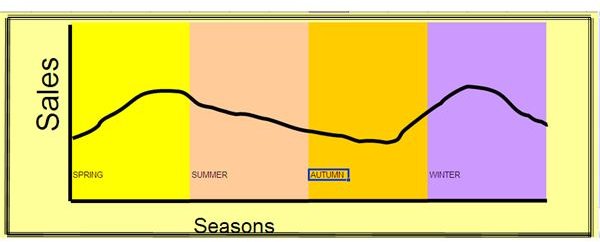What Is Seasonal Forecasting in Business?
Not every product sells at the same pace throughout the year, there are bound to be peaks and troughs on the sales graphs with the coming of different seasons and different months. This little fact creates problems when estimating future trends for a business and that’s exactly where seasonal forecasting techniques step in to help entrepreneurs and businesses to understand and interpret these seasonal variables and plan accordingly.
Understanding Seasonal Forecasting
In the plainest of words seasonal forecasting is an estimation technique that gives due consideration to seasonal variances that affect the sales and operations of a business. The concept works around analyzing seasonal variances in historical data and using this as a basis for forecasting future trends. For instance, a business that is into manufacturing woolen clothing is likely to see a surge in its sales as the winter season approaches, while the sales would nosedive as summers approach. Giving due importance to this fact during business forecasting will help the business to realign its operations and sales plans accordingly.
Even though the example we have used here is for a typical seasonal product line, other products also experience the seasonal variances in demand. Let’s consider the case of Plasma TVs which should see a somewhat consistent sale throughout the year as their demand has nothing to do with weather or season changes. But during festive seasons the sales pitch up as many families like to keep such expensive purchases until the festive season arrives. No wonder most businesses see their sales sky rocketing around Christmas and New Years. By and large, 80% of businesses are affected by seasonal variances in demand.
What Do Seasonal Forecasting Techniques Involve?
There are a range of seasonal forecasting techniques that businesses deploy when forecasting future sales. Since, covering them all is out of scope of this article, what we have here a simple outline of what most seasonal forecasting techniques involve.
The first thing to find out is to identify the pattern of seasonal variances in the available historical data. These patterns may be discernible across the four seasons or the twelve months, of the year. From this data, a seasonal index is calculated by comparing the averages for a particular segment of the year with the overall average for the complete year. This seasonal index will need to be calculated for every repeated period of variance identified while analyzing the historical data. For instance if a product sees sales variances during March, June and December repeatedly year after year, then these are the reputed variance periods for which the seasonal indices need to be calculated, individually.
With the seasonal index calculated, the next step toward making a seasonal business forecast is to carry out a seasonal adjustment. This is done by dividing the time series historical data with its corresponding seasonal index. The final data thus obtained forms the basis for forecasting.
Conclusion
For any company considering seasonal forecasting in business, it’s important for developing the right operations, sales and marketing plans, and tweaking them to accommodate seasonal variances. Avoiding seasonal forecasting for your business could result in wastage of finances and resources.
Image by: Sidharth Thakur
